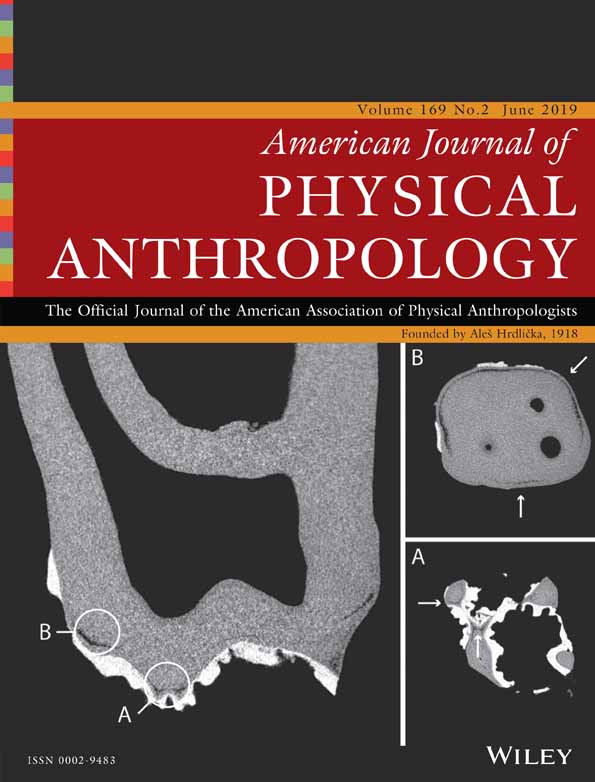A WORLD VIEW OF BIOCULTURALLY MODIFIED TEETH. Scott E. Burnett, Joel D. IrishGainesville, FL: University Press of Florida. 2017. 345 pp. ISBN 0978-0-8,130-5,483-4. $110.00 (Hardcover)
Perhaps you will begin reading this review with the same question I had when I began reading this book: Do we really need a whole book about culturally modified teeth?
This edited volume is a compendium of information on what is for most researchers a fairly obscure topic. However, as the editors make clear in their introduction, cultural modification of the dentition has been practiced all over the globe for millennia. Certainly, there are few cultural practices that are so widespread, and so long-lasting, and yet, so understudied. The book brings together a wide variety of researchers who provide chapters describing expressions of dental modification from every inhabited continent, from 7,000 ago to the present day.
The book focuses on the variety of dental modifications that are meant as social signifiers, including filing, notching, inlays, ablation, and to a lesser extent, dyeing (Burnett and Irish). Not included are those modifications that are related to oral health, such as drilling or filling caries, accidental chipping, or modifications that come from repeated idiosyncratic wear, such as pipe use or processing sinew. What might seem to be a narrow focus is absolutely necessary to allow a full exploration of the topic. In addition, a full exploration is warranted, especially in cases where evidence of dental modification has been used to support larger claims about prehistory. For example, Burnett's chapter carefully documents all 14 reported cases of intentional dental modification in the American Southwest, questioning the validity of most of these cases. Accuracy in recognizing intentional modification is especially important here, as tooth modification has been seen as evidence of pre-European contact Mesoamericans having direct contact with Southwestern groups. Burnett's chapter certainly weakens the evidence that Mesoamerica was an important social force in the Southwest through not only trade and other cultural exchange, but through direct migration north as well.
While this text makes clear the long history and commonality of dental modification, addressing why people modify their teeth is much more difficult. Two chapters specifically speak to this question. Friedling's chapter, presenting ethnographic survey results from a population that currently practices dental ablation, is intriguing. By asking a few relatively simple questions (which teeth have you had extracted? how old were you? why did you have teeth extracted?). Friedling provides insights bioarchaeologists can never have, but usually wish to infer. I do not know how generalizable these findings are, but they are interesting nevertheless. In a bioarchaeological approach, Lee's chapter asks “why dental ablation?” in an entirely different way, considering that hereditary agenesis may have “paved the way” for ablation as a marker of identity. While her results are inconclusive to negative, the perspective offered is thought-provoking and potentially fruitful in future research.
Overall, a clear thread through this text is that what has relegated the study of dental modification to relative obscurity is that, in most locations, it is represented by relatively small sample sizes. Until now, there have been many case studies and few syntheses. Perhaps for this reason, a few chapters in this book are principally descriptive. Irish provides a compilation describing cases and locations of tooth modification in African, which make for useful if not scintillating reading. Like the chapter by Irish, that provided by Harvey and colleagues is essentially descriptive. Harvey et al. supplement written and photographic descriptions with a focus on “visage,” including artistic visions of what individuals may have looked like with their modified smiles. While interesting, whether these illustrations add value to the chapter is debatable.
Beyond basic description, many of the chapters in this book attempt to test interesting bioarchaeological hypotheses, but fail to formulate firm conclusions simply because they are limited in ways common in bioarchaeology, including poor preservation, nonrepresentative sampling, and museum collection biases (Pardoe and Durband, Ikehara-Quebral et al., Watson and Garcia). Kusaka attempts to deal with these shortcomings through the inclusion of new types of data, in this case isotopic analysis, perhaps providing a roadmap for future analyses (Milner). Other authors (Friedland, and especially Tiesler et al.) are lucky to have large samples from locations where dental modification is commonly found, enough that statistical analyses of patterns within and between groups are possible.
In the introduction to the volume, Burnett and Irish make clear the importance of investigating our rare body of knowledge about worldwide cultural phenomena in the past. This sentiment is echoed and amplified by Milner in the concluding chapter. Dental modification has been used to indicate status in terms of age grade, origin, identity, and social class, common themes in anthropological inquiry. Because teeth have durability, we see cultural treatment there more often than is the case with hairstyles, tattoos, or jewelry, which often serve the same functions. What may end up being the single greatest contribution of this volume is the gathering of most if not all research on dental modification in a single reference. It is my hope that this gathering will spur future cross-cultural comparisons, a deeper level of analysis, and perhaps even synthesis, greater than was previously possible.




